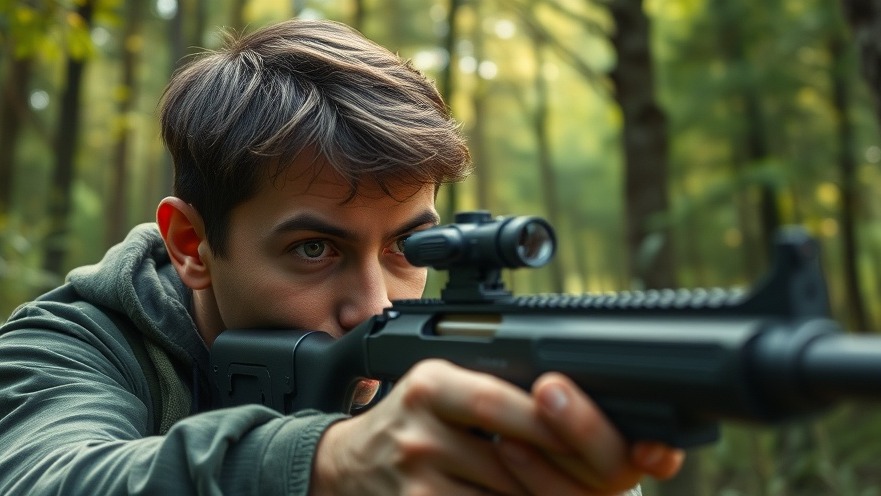
Unlocking Your Full Field of View in Shooting
For many shooters, the age-old advice of “close one eye” to focus on targets might feel instinctual. However, as firearms training evolves, it’s becoming evident that unlocking the skill of shooting with both eyes open can lead to significant benefits for everyone—from recreational shooters to seasoned professionals.
Why Is Shooting with Both Eyes Open Important?
Shooting with both eyes open doesn't just enhance your field of view; it transforms your situational awareness, reduces fatigue, and improves target acquisition time. Closing one eye deprives the shooter of crucial visual information, which could be vital in a defensive scenario. With both eyes active, not only can you track multiple targets, but you also retain depth perception and a broader awareness of your environment.
Imagine the speed at which you can respond in a critical situation when your brain processes a multitude of visual cues simultaneously. Your perception of the surroundings becomes fluid, adapted to natural human sight. This skill is essential regardless of whether you're on a shooting range or in a self-defense scenario. Expanding your vision means easier detection of secondary threats or environmental cues that might otherwise go unnoticed.
Challenges of Transitioning to Both Eyes Open
While the advantages are plentiful, many shooters encounter challenges when first trying to shoot with both eyes open. Double Image Confusion can quickly unsettle even the most experienced shooters—suddenly, they see duplicate guns or targets. Then there's the issue of Eye Dominance Conflicts; this occurs when your dominant eye doesn’t align with your dominant hand, complicating the aiming process. Finally, many face an initial Loss of Sight Clarity, where the non-dominant eye’s image conflicts with the dominant eye's aiming picture.
Steps for Effective Training
Training your brain to utilize both eyes effectively is paramount. Here are some strategies:
Identify Your Dominant Eye: Point at a distant object and check which eye keeps the target aligned when you close the other.
Practice Occlusion Training: Use translucent tape on your non-dominant eye lens to blur its image while keeping both eyes open.
Start with Dry Fire: Safely practice at home with an unloaded gun and focus on aligning your sights without the distraction of recoil.
Adjust Your Head Position: Tilt your head slightly to position your dominant eye behind the sights.
Begin at Close Range: Work at short distances to build confidence before progressing to longer targets.
Conclusion: Embrace the New Perspective
With these methods, shooters can transition into a more natural shooting approach with both eyes open. Whether you're preparing for self-defense or simply enjoy improving your shooting skills, opening both eyes can lead to a more rewarding experience. The eye-opening benefits (pun intended!) that come from this practice can't be overstated. By adopting this technique, you are not just adapting a new skill but enhancing your overall shooting experience. It’s time to challenge the old norms and embrace the expansive view that both eyes offer!
 Add Row
Add Row  Add
Add 




Write A Comment